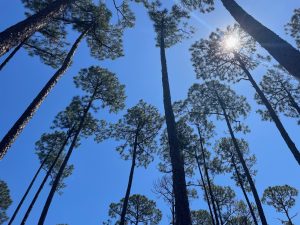
Florida is blessed with an abundance of ecologically diverse state parks. Among them are opportunities to hike, camp, and see wildlife lush forests and wide-open savannas or fish, swim, and paddle through pristine bayous and rivers.
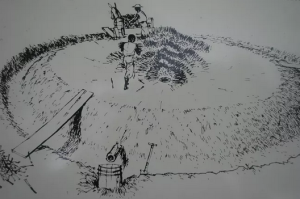
One park worth spending time in this time of year is Tarkiln Bayou State Preserve. Yes, that’s “Tar-KILN” not “Tar-KLIN” as I hear often—this area was known for many years as a place of processing pine tar from the native yellow pine in the area. Many products were made from tapping the bark and collecting sap from pines, including tar, pitch, and pine, a collection of compounds called “naval stores” that were used to help waterproof wooden ships. To process tar from the trees, the resin-rich cores of pine trees were placed in stacks and burned, releasing liquid tar into barrels. These were the “kilns” used to extract tar, and they were located all around the peninsula.
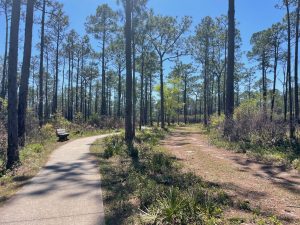
Tarkiln Bayou State Preserve is one of the newer state parks in Florida. Left relatively undisturbed since the end of the pine processing days of the mid-20th century, the property was eventually slated for a huge development project (1,300 homes, a golf course, and a marina). A “Friends of the Prairie” group purchased 900 acres in the mid 1990’s, which was then taken on by The Nature Conservancy. After a community-wide support effort including a letter-writing campaign from local 2nd graders, the state took over the land almost exactly 26 years ago, creating Tarkiln Bayou State Preserve.
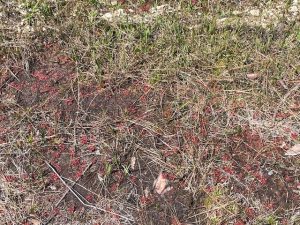
Part of the Big Lagon State Park system, Tarkiln has two separate trails. One is just at a mile long (round-trip) and more accessible, paved or boardwalked all the way from the parking lot to the bayou. A longer vegetated foot path, the Perdido Bay Trail, extends 6.5 miles through longleaf pine forest and wetland habitats.
Currently in the sunniest and wettest spots in the park, you’ll see carnivorous plants in flower. A large percentage the park is considered wetlands, and their waterlogged, acidic soils are prime habitat for pitcher plants and sundews.

As you move past the more open prairies and closer to the boardwalk on the shorter trail, you’ll wind through forested swamp. Species diversity increases, transitioning from a primarily pine overstory to sweet bay magnolia, wax myrtle, bald cypress, titi, and blackgum trees. In contrast to the bright green spring growth on most trees, there are several dead swamp bay trees that have turned an ominous shade of brown. These trees have been hit with laurel wilt, a fungus brought in by borer insects that specifically infest trees in the Persea genus. Of particular interest is that this disease affects avocado trees, Persea americana.
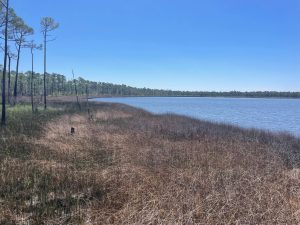
At the end of the boardwalk, the vegetation transforms from freshwater species to saltwater marsh. The bayou is ringed with black needlerush and buffered by more than 4,200 acres preserved since the original acquisition in the 90’s.
The park is open year-round, and rangers offer several popular guided walks every winter. For more information, check out the Florida State Parks website.
 4
4
